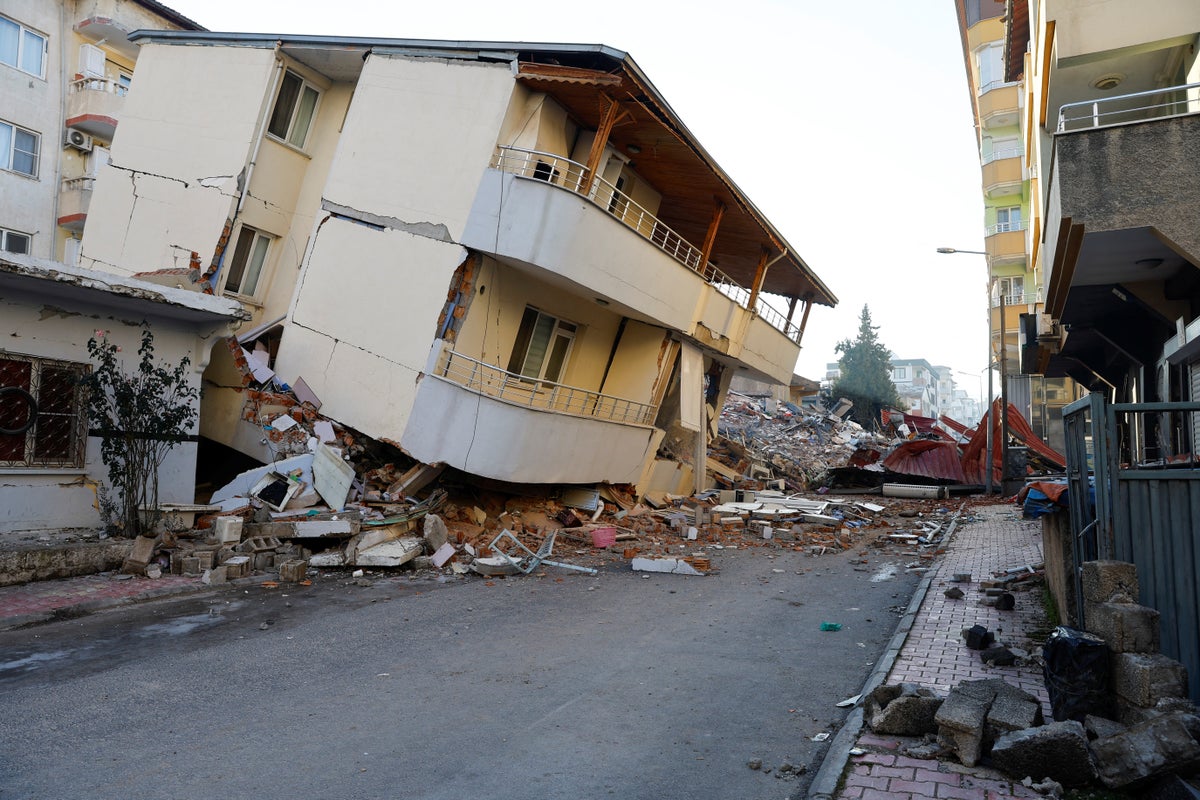
A series of powerful earthquakes that struck Turkey have likely moved the entire country by upto six metres, according to Italian seismologist Carlo Doglioni.
Two major earthquakes of magnitudes 7.8 and 7.5 jolted southern Turkey and northern Syria and killed over 15,000 people. Rescuers have been searching through the rubble for more bodies.
The Turkish disaster management agency said 12,391 people had so far been confirmed to have died in the country, while on the other side of the border in Syria, another 2,902 bodies have been recovered.
Professor Doglioni, the president of the National Institute of Geophysics and Volcanology (Ingv), said the two earthquakes were part of a single seismic sequence unleashed at the intersection of four tectonic plates that collide continuously – Anatolian, Arabian, Eurasian and African.
The Anatolian plate is moving towards the Arabian plate due to horizontal sliding, he suggested.
The quake, he said, generated a type of fault that seismologists call “shallow transcurrent” with a hypocentre – the deep place where it breaks out between 15-20km.
“In other words, Turkey in the estimates has actually slipped by five to six meters compared to Syria,” the professor told Italy 24.
“The massive laceration involved an area 190km long and 25km wide, violently shaking the ground and causing a sequence that reached the two most intense peaks nine hours apart.
“But in reality the Earth continued to tremble and to destroy with often significant intensity, around 5-6 degrees on the Richter scale,” the professor explained.
He added that more precise data will be available in the coming days following surveillance through the ESA Sentinel and ASI CosmoSkymed satellites.
The earthquake destroyed the runway at Hatay province’s airport and levelled hundreds of buildings across the region.
Meanwhile, Turkey’s president Recep Tayyip Erdogan visited Hatay on Wednesday as residents criticised the government’s efforts, saying rescuers were slow to arrive.
More than 110,000 rescue personnel were pressed into action and more than 5,500 vehicles, including tractors, cranes, bulldozers and excavators had been shipped, the disaster management agency said.
Mr Erdogan, who faces a tough battle for reelection in May, acknowledged problems with the emergency response.
“It is not possible to be prepared for such a disaster,” the president said.
“We will not leave any of our citizens uncared for.” He also hit back at critics, saying “dishonorable people” were spreading “lies and slander” about the government’s actions.







